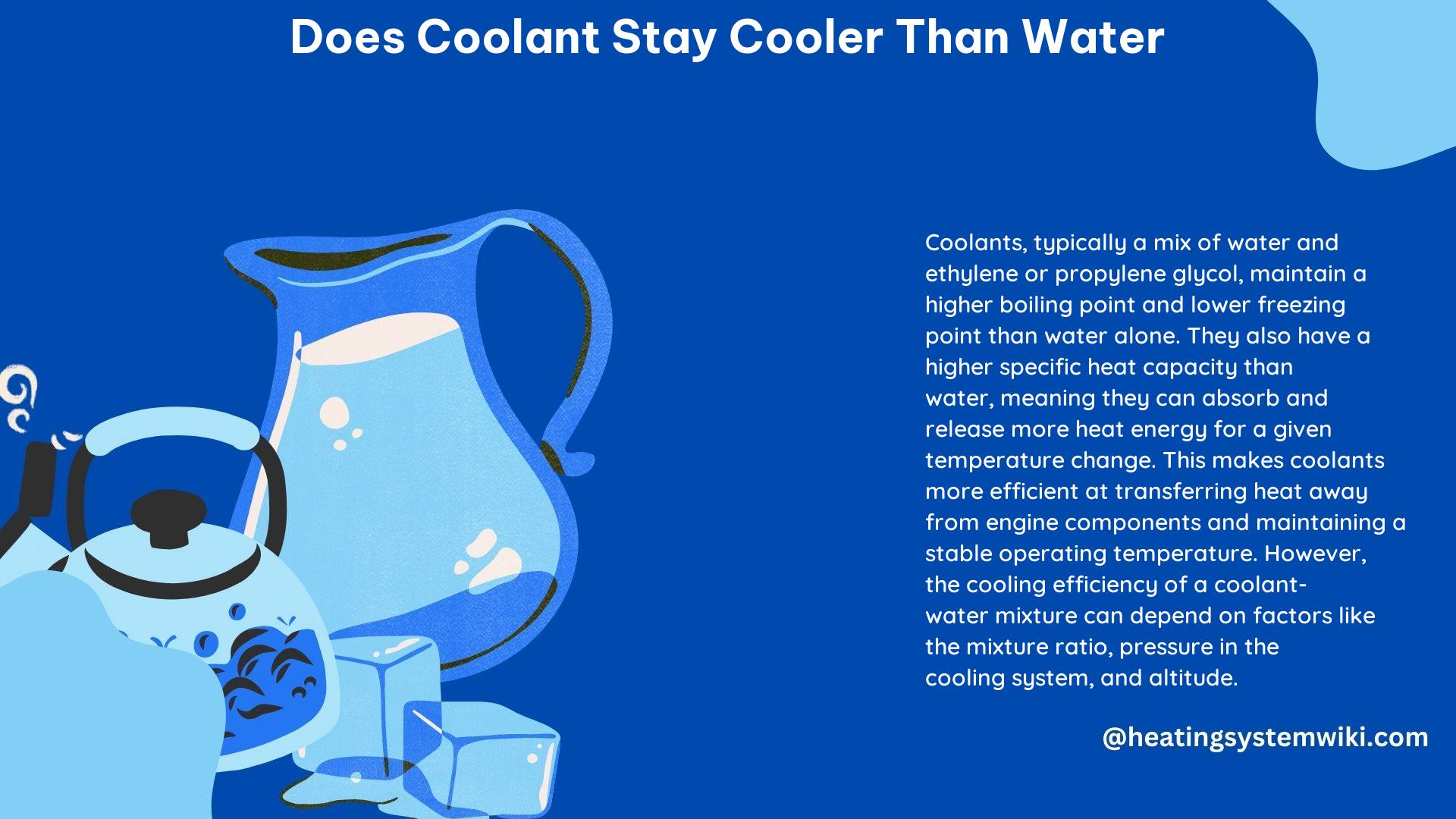Coolant, specifically antifreeze, stays cooler than water due to its higher boiling point and heat capacity. This is because antifreeze contains ethylene glycol or propylene glycol, which have higher vapor points and can absorb heat at higher temperatures without boiling. Additionally, antifreeze contains corrosion inhibitors that prevent rust and corrosion in the engine, which can degrade the engine’s performance and lifespan.
Boiling Point Comparison
When it comes to technical specifications, antifreeze has a boiling point of 197.3°C (387°F), which is significantly higher than water’s boiling point of 100°C (212°F). This means that antifreeze can absorb more heat energy before it reaches its boiling point, allowing it to keep the engine cooler for longer periods of time.
| Fluid | Boiling Point |
|---|---|
| Antifreeze | 197.3°C (387°F) |
| Water | 100°C (212°F) |
The higher boiling point of antifreeze is due to the presence of ethylene glycol or propylene glycol, which have higher vapor pressures than water. This allows the antifreeze to remain in a liquid state at higher temperatures, preventing the cooling system from boiling over and causing overheating.
Heat Capacity Comparison

Furthermore, antifreeze has a higher heat capacity than water, meaning that it can absorb and transfer more heat energy per unit mass. The specific heat capacity of a 50/50 mixture of antifreeze and water is approximately 3.6 kJ/kg·°C, while the specific heat capacity of pure water is 4.18 kJ/kg·°C.
| Fluid | Specific Heat Capacity |
|---|---|
| 50/50 Antifreeze-Water Mixture | 3.6 kJ/kg·°C |
| Water | 4.18 kJ/kg·°C |
The higher heat capacity of the antifreeze-water mixture allows it to absorb more heat from the engine before reaching its boiling point, providing better cooling performance and preventing overheating.
Corrosion Inhibition
In addition to its superior thermal properties, antifreeze also contains corrosion inhibitors that prevent rust and corrosion in the engine’s cooling system. These inhibitors form a protective layer on the metal surfaces, preventing the formation of scale and deposits that can clog the radiator and hoses, reducing the system’s efficiency.
The corrosion inhibitors in antifreeze are typically based on organic acids, such as silicates, phosphates, or organic acids like sebacic acid. These inhibitors work by forming a passive layer on the metal surfaces, preventing the electrochemical reactions that lead to corrosion.
Optimal Antifreeze-Water Mixture
From a DIY perspective, it is recommended to use a 50/50 mixture of antifreeze and water in the cooling system. This provides the optimal balance between heat transfer and freeze protection.
Using a 50/50 mixture ensures that the cooling system can withstand temperatures as low as -37°C (-34°F) without freezing, while still maintaining the superior thermal properties of the antifreeze. This mixture also helps to prevent corrosion and scale buildup, which can degrade the cooling system’s performance over time.
It is important to note that using straight water in the cooling system can lead to overheating and corrosion, as water has a lower boiling point and is more corrosive than antifreeze.
Conclusion
In summary, coolant stays cooler than water due to its higher boiling point and heat capacity, making it an essential component in the cooling system of engines. The presence of ethylene glycol or propylene glycol, as well as corrosion inhibitors, gives antifreeze its superior thermal and protective properties. Using a 50/50 mixture of antifreeze and water is recommended for optimal performance and protection against overheating and corrosion.
References:
– Reasons for Using a Coolant Over Water
– Glycol or Water Coolant?
– Running with Straight Water as Coolant in the Summer
– What Cools Better: Water or Antifreeze?
– Heat Transfer: Water vs. 50/50 Water Antifreeze
